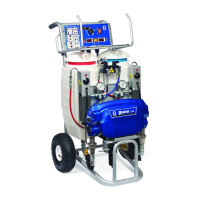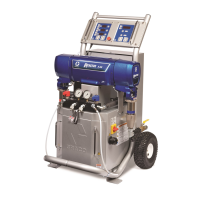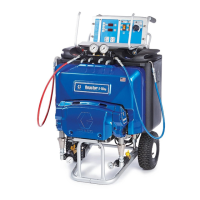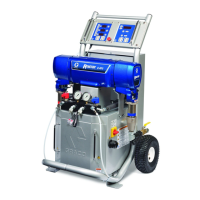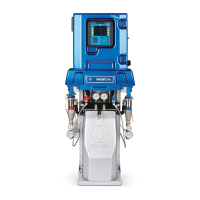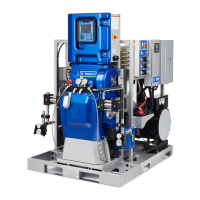Repair
309574L 41
Thermocouple
2. Relieve pressure, page 9.
3. Wait for heaters to cool.
4. Disconnect thermocouple wires from J1 on temper-
ature control board. See T
ABLE 4, page 38 and FIG.
13, page 39.
5. See F
IG. 15. Test with ohmmeter. Between wires
(S), resistance must be approximately 6 ohms.
Between tip (T) and wires, resistance must be infin-
ity (∞).
6. If thermocouple fails test, feed wires out of cabinet.
Note path as wires must be replaced in the same
way.
7. Loosen ferrule nut (N). Remove thermocouple (211)
from heater tube (201), then remove sensor housing
(H).
8. Replace thermocouple, F
IG. 15.
a. Remove protective tape from thermocouple tip
(T).
b. To ensure mixer (202) is out of the way, insert
1/4 in. drill bit into heater tube (201) to a mini-
mum depth of 0.81 in. (20.6 mm). If minimum is
not achieved, mixer must be moved before pro-
ceeding.
c. Apply PTFE tape and thread sealant to male
threads and tighten thermocouple housing (H)
into tube (201).
d. Push in thermocouple (211) so tip (T) contacts
heater element (207), avoiding mixer (202).
e. Tighten ferrule nut (N), holding thermocouple
(T) against heater element.
9. Route wires into cabinet and thread into bundle as
before. Reconnect wires to board.
10. Turn on heaters A and B simultaneously to test.
Temperatures should rise at same rate (30°F, +/-
4°). If one heater is low, loosen ferrule nut (N) and
tighten sensor housing (H) to ensure thermocouple
tip (T) contacts element (207).
1. Turn main power OFF . Disconnect power
supply.
WARNING
Read warnings, page 7. Wait for heaters to cool before
repairing.
FIG. 15. Thermocouple
202
201
S
NH T
207
Apply PTFE tape and thread sealant.
1
1
208
TI3249a
Apply 110009 thermal heatsink compound.
2
2
211
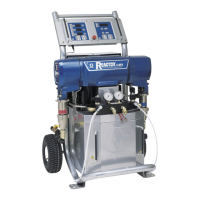
